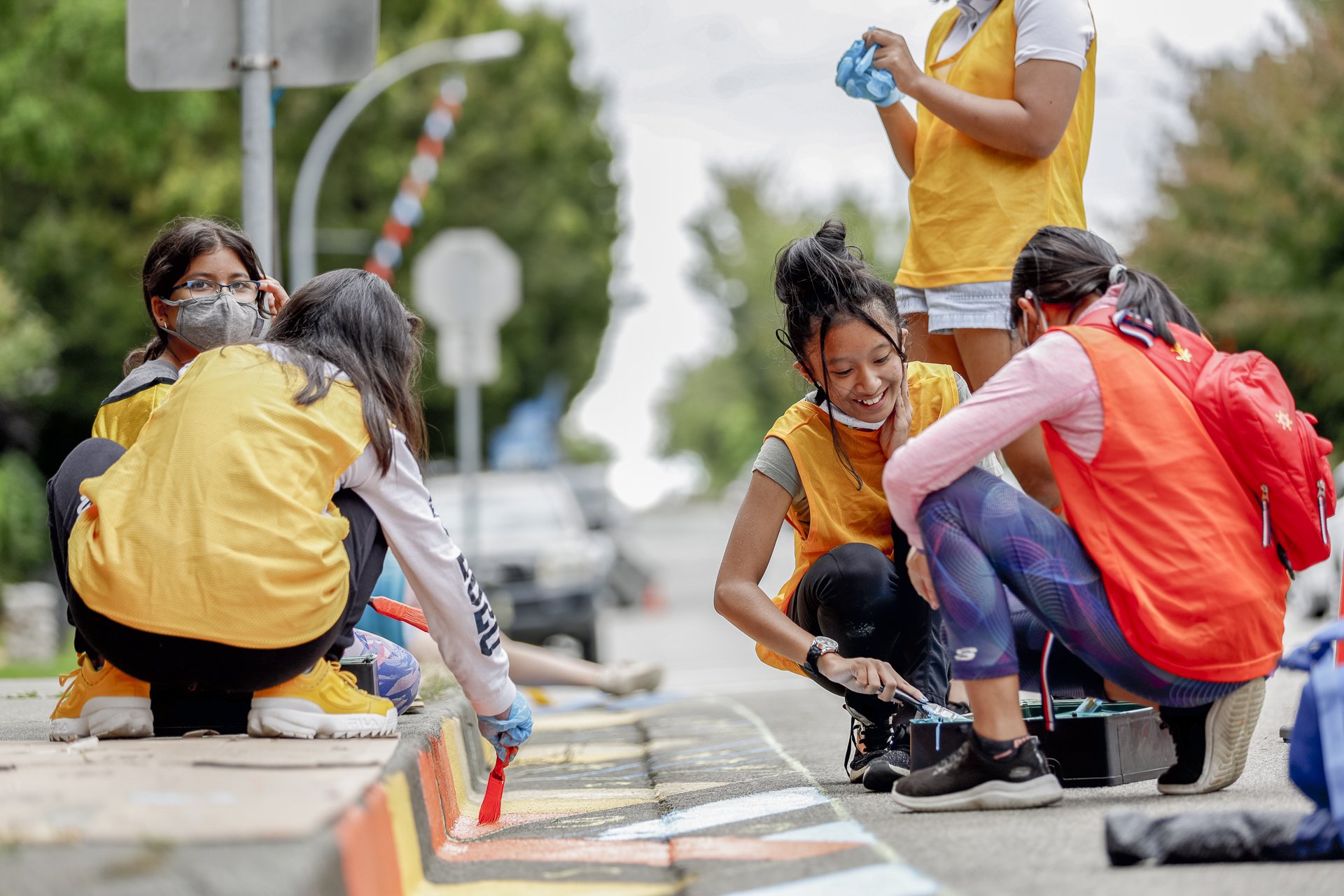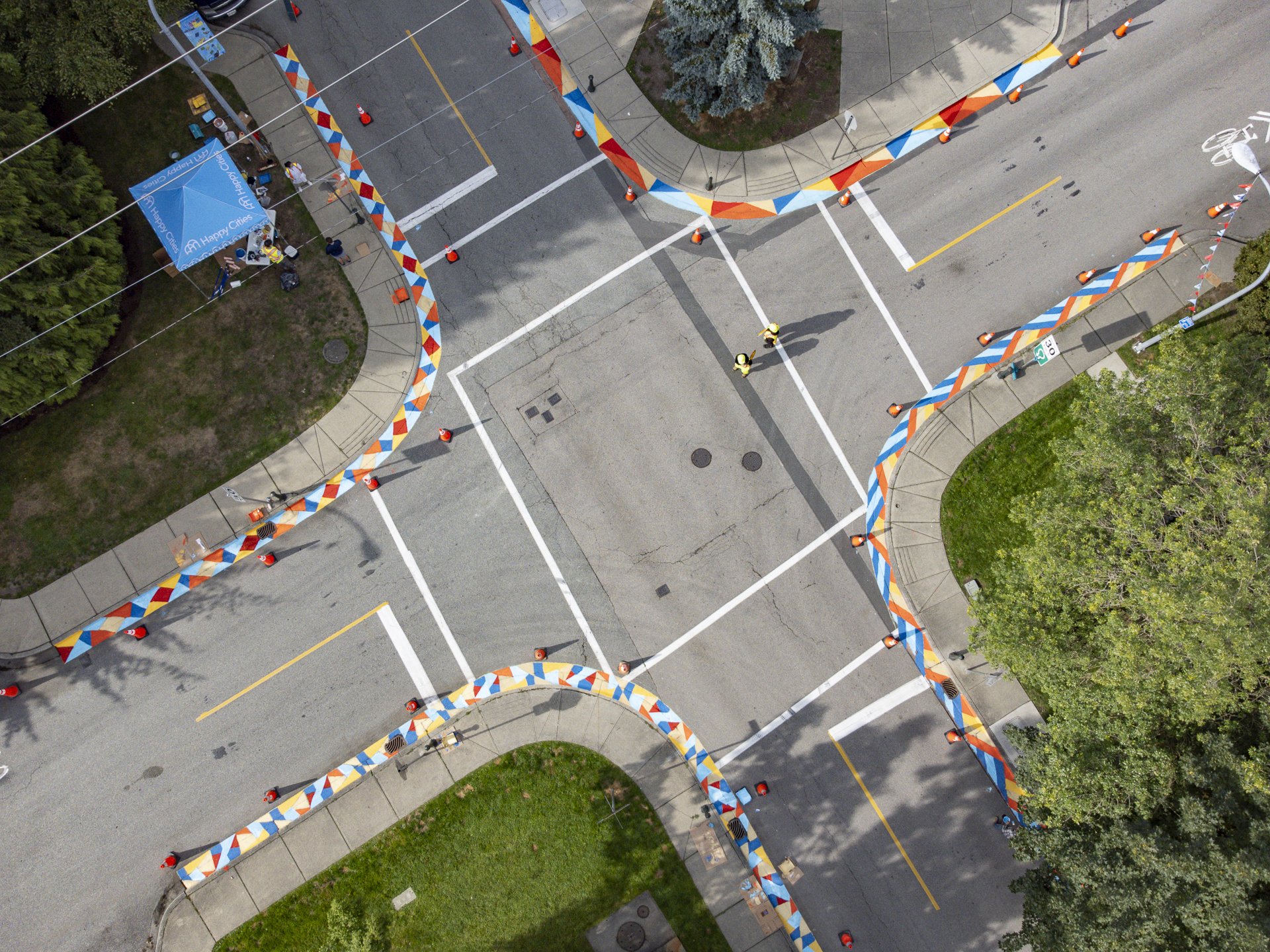Placemaking builds trust. Here’s why cities should invest in it
Community potlucks are going strong at Bruce Avenue Park in Windsor, with a recent Taco Tuesday photo posted on the community’s Facebook group. (Alex Song)
Early in the pandemic, a group of neighbours in downtown Windsor started meeting at a local park close to their homes. The park was largely unused, with no playground or courts. They started gathering to have a meal together. Largely through word of mouth, their gathering grew to a weekly potluck, often with over 100 people from around the neighbourhood showing up. And over three years later, they’re still going strong: Neighbours share food and activities, the local school brings a volleyball net, and children draw their parents. People who were strangers have come to know each other over time. Now, the City of Windsor wants to support the project, improve the park, and replicate the event across other neighbourhoods.
This simple act—community members getting together to organize activities or transform a place—is what planners call placemaking. These projects often take the shape of community-created murals, gardens, street parties, or other activities. But the true power of placemaking is in the process of how it brings community spaces to life: When people take an active role in shaping their community, they emerge with new social connections and a stronger sense of trust—in one another, and often in their government, too.
Volunteers prepare a set of chairs to place in public spaces around the neighbourhood. (Shawnee-Evergreen Community Association)
Youth in Rotterdam participate in photography workshop and share their thoughts on plans for new public spaces in the neighbourhood. (Mark Bolk)
Social connections: The building blocks of trust
Trust—and our social connections with one another—are in decline. In our research with Vancouver Coast Health, we found that one in five people feel their neighbourhoods are missing a sense of community and lacking friends who live nearby. About half of people surveyed across Metro Vancouver felt low levels of trust in their own neighbourhood, indicating that if their wallet was lost, they didn’t think it would be returned to them.
Social connections are one of the easiest ways to build trust. This includes interaction with those in our close circles, but also informal encounters with people in the community—like saying hello to a familiar face at the park or coffee shop. Research also shows that one of the most powerful ways to boost a sense of community is to work with like-minded people to fulfill a goal that is greater than any one individual.
The neighbours in Windsor are just one example that shows how this is possible. We can rebuild trust at the local level—between community members, and to local government. It all starts by involving people in shaping their own community.
Community members write ideas on post-it notes for what they want to see in their neighbourhood. (Happy Cities)
The City of Surrey is supporting placemaking in local neighbourhoods through the Focus Newton project. (Happy Cities)
Placemaking for local ties and trust
Our neighbourhoods are powerful places to make a change. Solutions are most successful when developed locally—for example, the neighbours in Windsor who transformed an empty park into a beloved gathering place. And this process of placemaking helps us better understand the unique needs of the community, and address them.
Through low-barrier activities, placemaking can give a voice to people who are often overlooked or underrepresented in the design of city spaces. In Sudbury, a community mural led by local artist Mique Michelle invited people experiencing homelessness to shape their community. The mural is painted on a wall by the YMCA, recognizing the overnight warming centres that saved lives during the pandemic.
Myths and Mirrors Community Arts led a community mural project, inviting people experiencing homelessness and poverty to shape a shared outdoor space. (Gabe Abate)
The Forest Glen Connection project, in Mississauga, engaged residents in creating a community garden to meet their needs. (Ecosource)
Trust in each other, and in our government
At the same time, placemaking also strengthens trust in local government. It can provide a platform for people’s voices to be heard, and invite people who are often excluded from civic processes—such as people experiencing homelessness, youth, newcomers, and people with disabilities—to be decision makers in their community. This is especially important since low-income and young people have markedly lower levels of trust in their government than other groups.
Trust in our government is also linked to our wellbeing. During the COVID-19 pandemic, for example, countries that reported higher levels of trust in government had communities who showed more caring behaviour—like getting vaccinated against the flu, and being considerate of the environment.
In Fragile Neighborhoods, Seth Kaplan makes the case that our social glue is weaker than ever—both in our communities and in our governments. In fact, democracy is weak because the communities we live in are failing us. And strong social connections are key to our individual wellbeing, just as much as they are to our national wellbeing. Real communities create an ecosystem where each member plays a role that strengthens connections, mutual support, security, and belonging. If we invest hyperlocally, we may just be able to strengthen society as a whole. Local, community-led improvements to a place are a kind of glue for social trust.
When cities support placemaking—for example, by helping middle school students paint murals to create safer streets—it builds trust in the commitment of the government to care for its citizens. And while it’s less splashy than major investment (like a new sports stadium), it is a cost-effective and impactful way that governments can address problems while fostering trust in their processes.
Students paint curb bump-outs in New Westminster, fostering community connections and participation in civic processes. (Jared Korb)
Strengthening community-led placemaking
Placemaking or small one-off projects are not a replacement for deep community engagement. But they are building blocks for people to engage in shaping their community in easy, low cost, and impactful ways. By participating in these projects, people get to know their neighbours and their neighbourhood. Governments can support these community-led initiatives by providing funding and opportunities for placemaking. All of this builds social ties and trust. And that's good news for the health of our communities.









